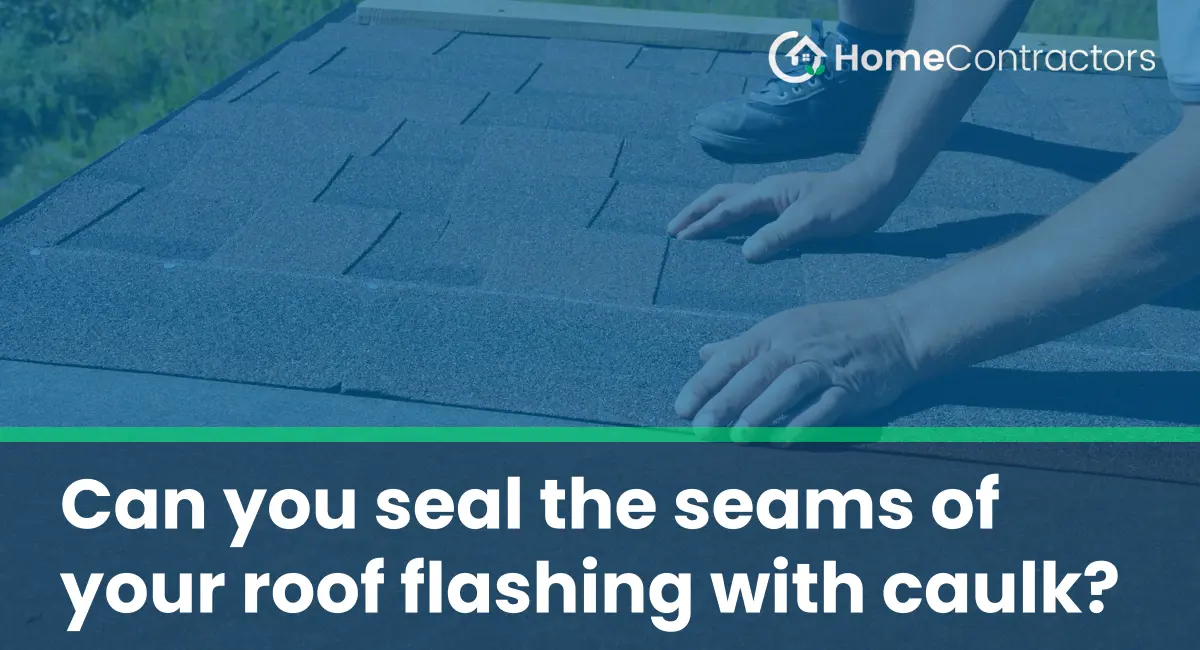Introduction: The Importance of Roof Flashing and Seams
Roof flashing plays a crucial role in protecting your home from water damage. It is a thin, waterproof material installed at various vulnerable points on your roof, such as around chimneys, vents, and skylights, to prevent water from seeping into the underlying structure. The seams of roof flashing, where two pieces meet or overlap, are particularly vulnerable areas for potential leaks. To ensure the effectiveness of your roof flashing, it is essential to properly seal these seams. One popular method to accomplish this is by using caulk. In this article, we will explore whether using caulk to seal the seams of your roof flashing is a suitable approach.
Understanding Roof Flashing and Its Purpose
Before discussing the use of caulk to seal seams, it is crucial to understand the purpose and composition of roof flashing. Flashing is typically made from materials such as aluminum, copper, or galvanized steel, chosen for their durability and weather-resistance properties. The primary function of roof flashing is to provide a watertight seal in areas where the roof’s integrity is compromised, preventing water infiltration and safeguarding against leaks.
The Need for Sealing Roof Flashing Seams
Seams in roof flashing are potential weak spots, susceptible to water penetration. The seams can occur when multiple pieces of flashing are joined together, overlapping, or at the junction of flashing and other roof components. If left unsealed or improperly sealed, these seams can become entry points for water, leading to significant damage to the underlying structure, such as rotting of wood, mold growth, and even compromised structural integrity. Therefore, sealing the seams of roof flashing is essential to maintain a watertight barrier and protect your home.
Using Caulk to Seal Roof Flashing Seams
Caulk is a versatile material commonly used to seal various gaps, joints, and seams in construction applications. When it comes to roof flashing seams, using caulk to create a watertight seal can be an effective approach. However, it is essential to choose the right type of caulk suitable for outdoor or roofing applications.
Selecting the Correct Caulk
To ensure a successful and long-lasting seal, it is crucial to select a caulk specifically designed for roofing or outdoor use. Roofing caulks are formulated to withstand the harsh weather conditions typically experienced on rooftops, including exposure to UV rays, temperature fluctuations, and moisture.
Silicone-based caulks or elastomeric sealants are often recommended for sealing roof flashing seams. These caulks offer excellent flexibility and durability, accommodating roof movements caused by thermal expansion and contraction. Additionally, they provide superior resistance to moisture, UV light, and weathering, ensuring a long-lasting seal.
Steps to Seal Roof Flashing Seams with Caulk
Sealing roof flashing seams with caulk involves a relatively straightforward process. Here are the general steps to follow:
- Clean the area: Thoroughly clean the surface of the roof flashing, removing any dirt, debris, or existing caulk. Use a wire brush or a similar tool to ensure a clean and smooth surface.
- Prepare the caulk: Read the instructions provided by the manufacturer and prepare the caulk accordingly. Cut the tip of the caulk tube at an angle to achieve the desired bead size.
- Apply the caulk: Starting at one end of the flashing seam, apply a continuous bead of caulk along the entire length. Use steady pressure on the caulk gun to ensure a consistent application.
- Smooth and shape the caulk: To create a neat and seamless finish, use a caulk smoothing tool or a putty knife dipped in soapy water to shape and smooth the caulk.
- Allow for curing: Follow the manufacturer’s instructions regarding the curing time for the caulk. Typically, it takes around 24 hours for the caulk to fully cure and achieve its maximum sealing properties.
Periodic Inspection and Maintenance
While sealing the seams of your roof flashing with caulk can provide effective protection against leaks, it is crucial to conduct regular inspections and maintenance to ensure its continued effectiveness. Over time, caulking may deteriorate due to exposure to the elements. Therefore, inspect the caulked seams annually and reapply or touch up as needed. Additionally, ensure that the roof flashing itself remains intact and free from any damage or corrosion.
To seal the seams of your roof flashing effectively, using caulk can be a suitable solution. However, it is essential to choose the right type of caulk specifically designed for roofing applications. By following the proper steps and conducting regular maintenance, you can ensure a water-tight seal and protect your home from potential water damage. Remember, when in doubt, consult a professional roofing contractor for guidance and assistance.
